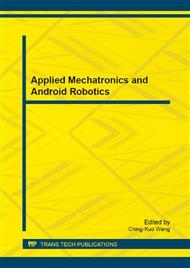p.124
p.128
p.132
p.141
p.145
p.149
p.157
p.161
p.167
Human Detection Algorithm by Meanshift Based on Depth Map
Abstract:
This paper presents a method of human detection by Meanshift based on depth map. By analyzing and comprehensively applying segmentation method based on height information to extract moving target and remove the background information from depth map, then find the region of interest (ROIs) with moving target, thus through mean shift method to achieve real-time detection of targets (pedestrian). Depth image has nothing to do with color space and not suffer from the factors such as illumination, shadow effect. In this paper, using the depth image pattern recognition is a good way to overcome the difficulties of visible light image pattern recognition often encountered.
Info:
Periodical:
Pages:
145-148
Citation:
Online since:
September 2013
Keywords:
Price:
Сopyright:
© 2013 Trans Tech Publications Ltd. All Rights Reserved
Share:
Citation:


